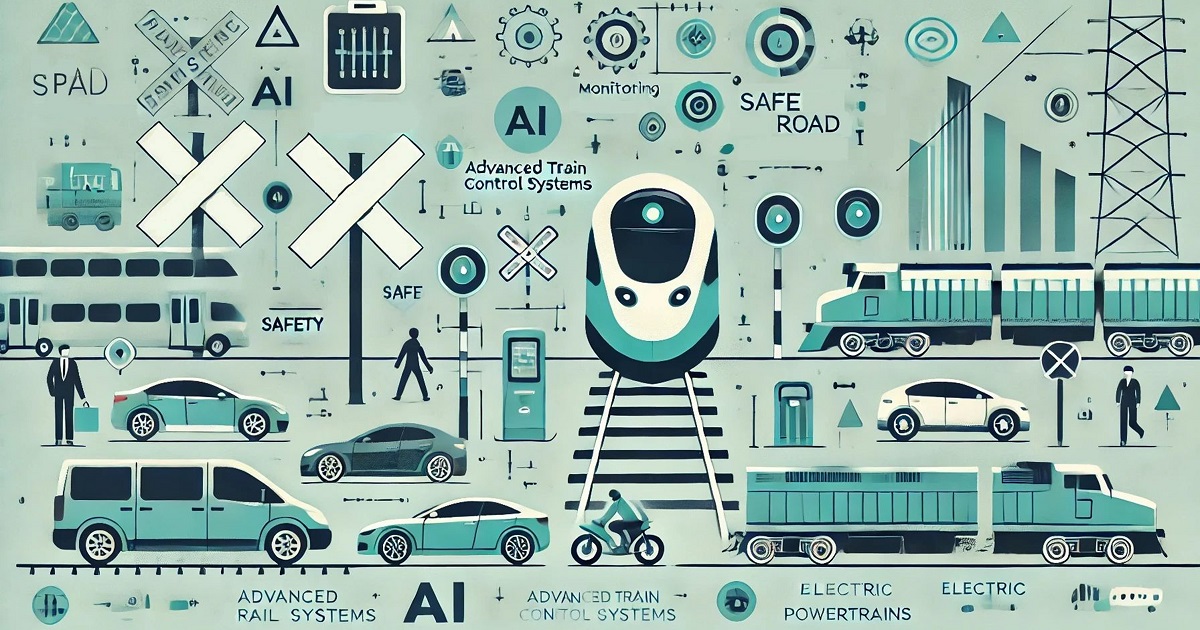- 2.5Impact Factor
- 5.5CiteScore
- 20 daysTime to First Decision
New Challenges in Vehicle Dynamics and Road Traffic Safety
This special issue belongs to the section “Transportation and Future Mobility“.
Special Issue Information
Dear Colleagues,
Ensuring the safety of road and rail transportation is a critical challenge, particularly at road–rail grade crossings, which are the leading cause of rail-related fatalities globally. The urgency of this issue is heightened by the proliferation of high-speed rail systems. Addressing these risks requires a multidisciplinary approach integrating technological advancements such as eliminating at-grade crossings and deploying advanced train control systems. These systems monitor train speeds and locations, automatically halting operations when a crossing is obstructed, thereby preventing severe collisions and enhancing overall safety.
In parallel, innovations in vehicle dynamics are revolutionizing safety, passenger comfort, and energy efficiency. Artificial intelligence, for instance, is harnessed to anticipate and mitigate potential risks in real-time, complementing traditional safety measures and enabling more informed decision making during critical situations. Moreover, advancements in vehicle powertrains, including hybrid and electric technologies, contribute to sustainable transportation and maintaining high safety standards.
Vehicle design is also evolving and driven by active and passive safety technology innovations. Advanced materials, adaptive systems, and improved ergonomics play a crucial role in protecting passengers and pedestrians. These developments, guided by comprehensive risk analysis, ensure that safety solutions are effective and practical.
This Special Issue invites scholars and practitioners to explore these pressing challenges and highlight cutting-edge innovations in vehicle dynamics and transportation safety. Contributions may focus on practical applications, theoretical insights, or interdisciplinary research that advances safer, more efficient, and sustainable transport systems.
Dr. Michał Opala
Dr. Piotr Gołębiowski
Guest Editors
Manuscript Submission Information
Manuscripts should be submitted online at www.mdpi.com by registering and logging in to this website. Once you are registered, click here to go to the submission form. Manuscripts can be submitted until the deadline. All submissions that pass pre-check are peer-reviewed. Accepted papers will be published continuously in the journal (as soon as accepted) and will be listed together on the special issue website. Research articles, review articles as well as short communications are invited. For planned papers, a title and short abstract (about 250 words) can be sent to the Editorial Office for assessment.
Submitted manuscripts should not have been published previously, nor be under consideration for publication elsewhere (except conference proceedings papers). All manuscripts are thoroughly refereed through a single-blind peer-review process. A guide for authors and other relevant information for submission of manuscripts is available on the Instructions for Authors page. Applied Sciences is an international peer-reviewed open access semimonthly journal published by MDPI.
Please visit the Instructions for Authors page before submitting a manuscript. The Article Processing Charge (APC) for publication in this open access journal is 2400 CHF (Swiss Francs). Submitted papers should be well formatted and use good English. Authors may use MDPI's English editing service prior to publication or during author revisions.
Keywords
- vehicle dynamics
- road traffic safety
- advanced train control systems
- active and passive safety technologies
- energy efficiency and comfort in vehicles
- passenger and pedestrian safety innovation

Benefits of Publishing in a Special Issue
- Ease of navigation: Grouping papers by topic helps scholars navigate broad scope journals more efficiently.
- Greater discoverability: Special Issues support the reach and impact of scientific research. Articles in Special Issues are more discoverable and cited more frequently.
- Expansion of research network: Special Issues facilitate connections among authors, fostering scientific collaborations.
- External promotion: Articles in Special Issues are often promoted through the journal's social media, increasing their visibility.
- e-Book format: Special Issues with more than 10 articles can be published as dedicated e-books, ensuring wide and rapid dissemination.

